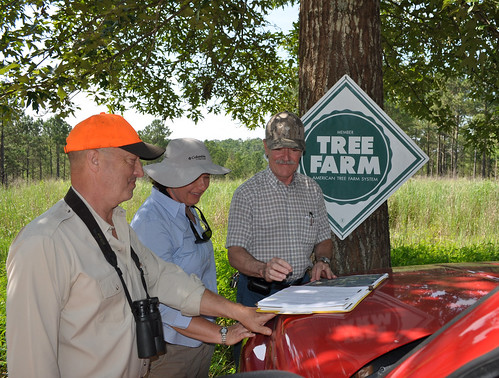
Dennis Hiltner truly leads a “farm-to-table” existence.
Some days, you will find Hiltner alongside his wife and business partner, Linda, in Columbia, S.C.’s Five Points neighborhood, managing their business, The Gourmet Shop. (The Hiltners opened the Columbia landmark, which is part wine shop, food and kitchenware store, and café, in 1979.)
When his restaurateur duties are complete, Hiltner seeks refuge in Fairfield County, where he owns and operates a meticulously managed 619-acre tree farm.
Working closely with USDA’s Natural Resources Conservation Service (NRCS), he has implemented conservation across his operation. Hiltner is a driven entrepreneur when it comes to managing the tables where his loyal patrons enjoy a lovely meal. But, at heart, he is a devoted conservationist who has a sincere desire to protect and improve the natural resources on his land.

The oldest of eight children, Hiltner grew up in Langdon, N.D., on an 80-acre farm, where he helped maintain a garden, raised cows and pigs, and grew wheat and barley. After stints in college and the Marine Corps, he purchased the first parcel of the property he now manages.
With technical and financial assistance from NRCS, Hiltner has implemented conservation practices such as tree thinning, prescribed burning and establishment of native warm season grasses like partridge pea, native little bluestem, switchgrass and Indian grass.
The grasses offer valuable food and cover for wildlife species such as quail, turkey and deer.
The Hiltners have also noticed increased sightings of native songbirds and migratory birds.
With binoculars close at hand, Hiltner is a well equipped and experienced bird watcher, and rattles of the names of at least five different bird species within a half-hour tour of the area.
Prescribed burns help remove the leaf litter on the forest floor, exposing insects and seeds that wildlife thrive on, and reduce the risk of wildfire.
Hiltner also protects water quality in the area by leaving forested buffers alongside the streams on his property. The buffers ensure that any runoff from the property is filtered before entering the waterways.
Hiltner’s dedication to protecting the forest and making a home for wildlife is palpable. And from his tree farm to the tables of his restaurant, this is a man adept at making a living from the land—while protecting it, too.
Check out more conservation stories on the USDA blog.
